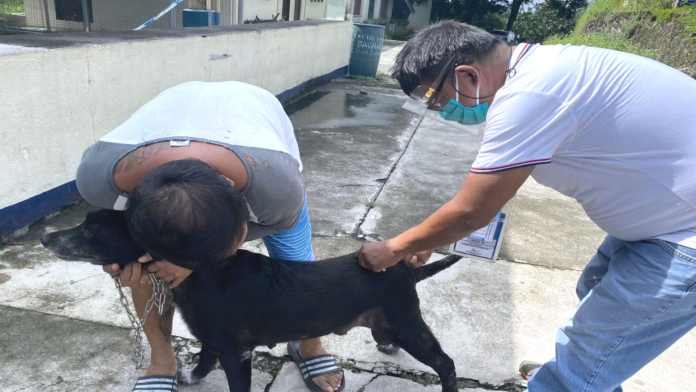Ilocos Norte Governor Matthew Joseph Manotoc is urging local government units (LGUs) in the province to contribute to the control and eradication of human and animal rabies incidents.
“We have procured some vaccines (anti-rabies) but at the same time, I hope the towns will also have their own because sometimes they get it all from us,” Manotoc said in a media interview Friday when asked about the shortage of anti-rabies vaccines for humans and animals.
Without a multi-sectoral effort, provincial veterinarian Loida Valenzuela said reclaiming the old title as rabies-free Ilocos Norte, which the province achieved in the last 10 years will be impossible.
According to the Provincial Veterinary Office, rabies cases have been increasing in almost all parts of the province, with a total of 151 rabies incidents recorded, so far, this year.
“Forty (40) of these cases were traced from stray dogs without identified owners. This is a health concern, so we are appealing to all our LGUs to help us in the implementation of Anti-Rabies Act of 2007 because the target is to have it eliminated by 2030,” she said.
Of the 151 positive cases, 12 resulted in human deaths, according to a report from the Provincial Health Office.
The fatalities were from the cities of Laoag and Batac as well as from the towns of Pinili, Paoay, Sarrat, Nueva Era, Badoc and Solsona.
Ilocos Norte succeeded in eradicating rabies prior to the pandemic with the support of the international organization Global Alliance for Rabies Control (GARC).
In those years, mass dog vaccination and registration were active including the conduct of multi-sectoral meetings as well as massive information and education campaigns to prevent animal bites.
Rabies is a viral disease that causes acute inflammation of the brain in humans and warm-blooded animals, with dogs being the most commonly involved. Early signs include fever and tingling at the bite site, usually followed by violent excitability, a fear of water, paralysis in some parts of the body, or loss of consciousness. Once symptoms appear, the disease is nearly fatal. They usually show one to three months after the bite.
Over a thousand Bantay Rabies sa Barangay Volunteers (BRBV) were then organized to monitor rabies incidents in the locality until they loosened up during the pandemic. (PNA)



